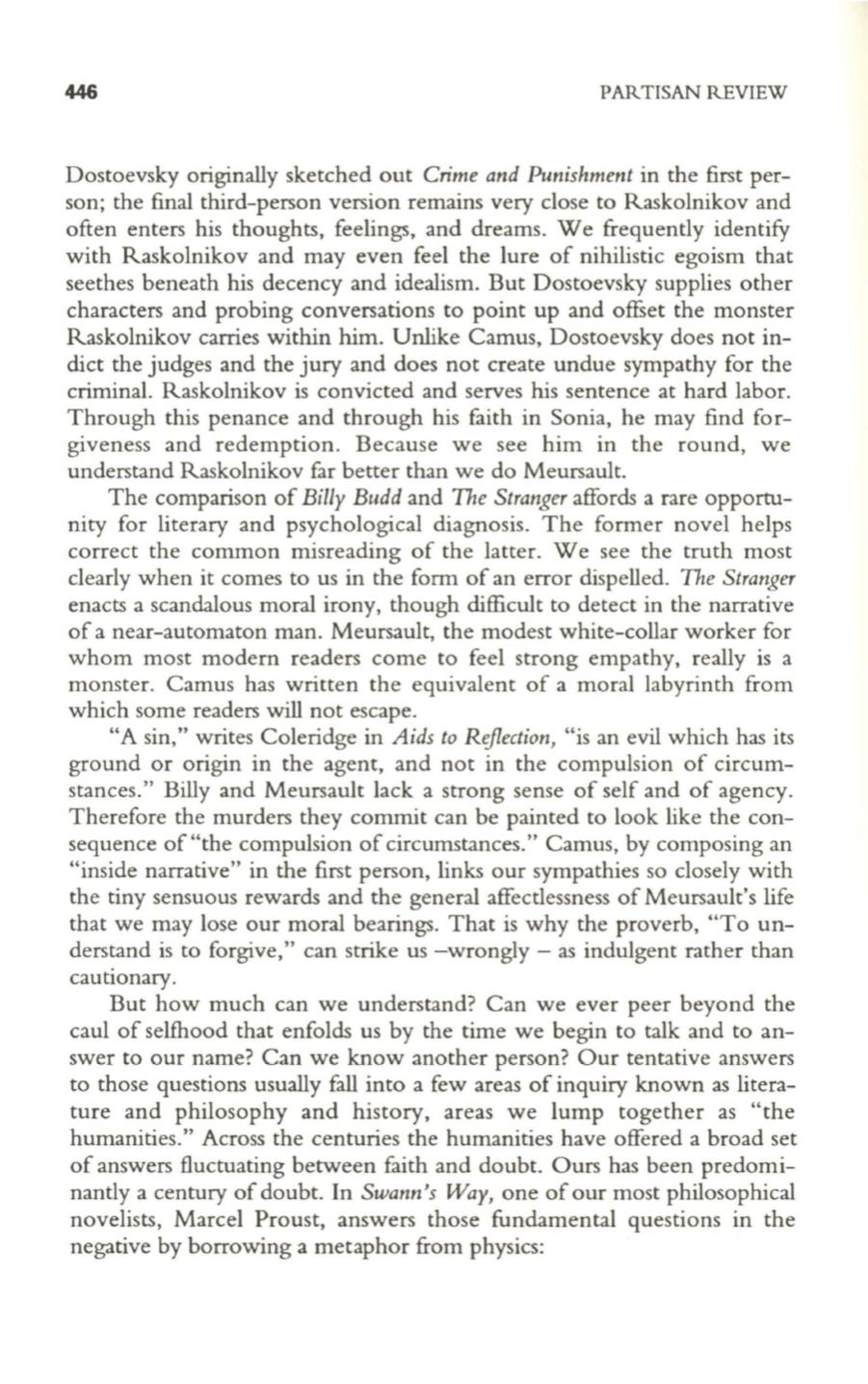
446
PARTISAN REVIEW
Dostoevsky originally sketched out
Crime and Punishment
in the first per–
son; the final third-person version remains very close to Raskolnikov and
often enters his thoughts, feelings, and dreams. We frequently identify
with Raskolnikov and may even feel the lure of nihilistic egoism that
seethes beneath his decency and idealism. But Dostoevsky supplies other
characters and probing conversations to point up and offset the monster
Raskolnikov carries within him. Unlike Camus, Dostoevsky does not in–
dict the judges and the jury and does not create undue sympathy for the
criminal. Raskolnikov is convicted and serves his sentence at hard labor.
Through this penance and through his faith in Sonia, he may find for–
giveness and redemption. Because we see him in the round, we
understand Raskolnikov far better than we do Meursault.
The comparison of
Billy Budd
and The
Stranger
affords a rare opportu–
nity for literary and psychological diagnosis. The former novel helps
correct the common misreading of the latter. We see the truth most
clearly when it comes to us in the form of an error dispelled. The
Stranger
enacts a scandalous moral irony, though difficult to detect in the narrative
of a near-automaton man. Meursault, the modest white-collar worker for
whom most modem readers come to feel strong empathy, really is a
monster. Camus has written the equivalent of a moral labyrinth from
which some readers will not escape.
"A sin," writes Coleridge in
Aids to Reflection,
"is an evil which has its
ground or origin in the agent, and not in the compulsion of circum–
stances." Billy and Meursault lack a strong sense of self and of agency.
Therefore the murders they commit can be painted to look like the con–
sequence of "the compulsion of circumstances." Camus, by composing an
"inside narrative" in the first person, links our sympathies so closely with
the tiny sensuous rewards and the general affectlessness of Meursault's life
that we may lose our moral bearings. That is why the proverb, "To un–
derstand is to forgive," can strike us -wrongly - as indulgent rather than
cautionary.
But how much can we understand? Can we ever peer beyond the
caul of selfhood that enfolds us by the time we begin to talk and to an–
swer to our name? Can we know another person? Our tentative answers
to those questions usually fall into a few areas of inquiry known as litera–
ture and philosophy and history, areas we lump together as "the
humanities." Across the centuries the humanities have offered a broad set
of answers fluctuating between faith and doubt. Ours has been predomi–
nantlya century of doubt. In
Swann's Way,
one of our most philosophical
novelists, Marcel Proust, answers those fundamental questions in the
negative by borrowing a metaphor from physics:


